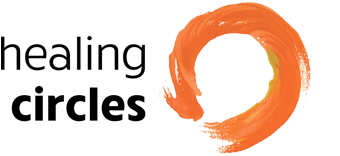Healing from Chronic Pain
It wasn’t an experience I was eager to revisit. Pain (mostly migraines) and fatigue dominated my life for 15 hears. I cannot offer a formula for my return to health, except to say that I explored many modalities, and that health begets health. Once I realized I was over -dependent on medication, I became determined to extricate myself from over-use and from western medicine as much as possible. I wanted a whole-person approach instead of adding more medication, pathologizing my pain, and fragmenting my approach to it. I was fortunately able to do so and continued with holistic approaches until I got one leg up and then stepped up to higher ground. I think of it as arriving at an alignment that enabled me to shift to a higher vibrational frequency. Since regaining my health, I have been enthusiastically active—physically, socially, and in community.
One important part of that metaphoric leg up was the influence of a group for chronic pain and the example of my own psychotherapy clients. From them, I learned to focus on what I could do, to focus on strengths, and develop my creativity. Exploring visual, and then expressive arts became my sustenance.
Even though I’ve been mostly free of pain for eight years, I hesitated when I was asked to co-host a circle for people with chronic pain at Healing Circles Langley. But remembering how important the support of others had been to me, I happily agreed. The group has been growing in numbers and cohesion and provides a living, breathing experience that’s healing. Healing circles guidelines are our foundation. I’ve elaborated on how they play out in this group:
- Acceptance (and avoidance of shame or blame inferences). “Should” statements are often shaming, as are sentences beginning with “Have you tried?” Acceptance of circle members as they are is foundational in the group and seems to be an understanding that doesn’t need overt encouragement. We offer carefully worded suggestions if someone asks for them, or as information for the group as a whole
- Compassionate detachment. Responding to a person’s description of pain with matter-of-factness makes room for the person’s experience without overlaying someone else’s projections, fears, guilt, avoidance, or mis-applied story. Simple expressions of sympathy seem to work well, such as “that’s rough” or “that’s how I feel sometimes.”
- Focus on the whole person. We encourage discussion about strengths, accomplishments, areas of interest, activities that offer an antidote to pain, and reinforce the expression of them when they happen spontaneously. As hosts, we often say something like: “I’m inspired by your humor, your courage in speaking so honestly, the articulate way you described your experience ,” etc.
- Make room for bonding within the group. We begin with silence and then check in one-by-one. After that, we’ve found that an open sharing works best for bonding, allowing people to ask questions of each other, or reach out to hold a hand. The seven regular group members have bonded strongly and give each other lots of support, appreciations, and praise.
- Give attention as needed to strong emotion and disclosure of trauma. Usually, we can give acknowledgement and support within the circle by responding with reflections and/or taking a pause. If the need seems acute, a host might stay after for a circle of two, follow-up by phone, or determine other resources within the community to support someone in deep need.
- Skill-building: The group asks to learn new skills. I lead guided meditations using a focus on breathing and bring awareness to parts of the body, mind, and spirit that are feeling well, not in pain. We’ve had a guest teacher in fascia release and have followed up integrating movement into the guided journeys or offering suggestions for micro or strengthening movements while sitting. I have carried forward the perspective from teachers of meditations for pain, that coping with and learning with severe and/or chronic pain is worthy work involving courage, fortitude, and skill
I look forward to seeing how the group evolves.




